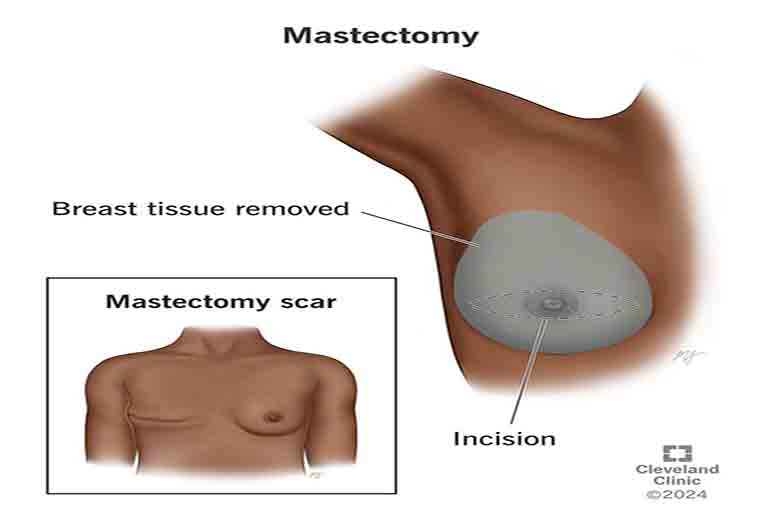Home / Startup Revolutionizes Breast Cancer Surgery with Real-Time Insights
Startup Revolutionizes Breast Cancer Surgery with Real-Time Insights

Recent advancements in surgical technology are significantly enhancing the outcomes for breast cancer patients, thanks to innovative solutions developed by a groundbreaking startup. By integrating cutting-edge real-time imaging and data analytics into surgical procedures, the organization is ushering in a new era of precision medicine. Surgeons can now access critical insights during operations, allowing them to make informed decisions instantaneously. This immediate feedback mechanism not only minimizes the risk of complications but also optimizes the surgical pathway, ultimately improving the patients' recovery experience.
Key features of this transformative technology include:
- Real-Time Imaging: Surgeons can visualize tumor margins with unprecedented clarity, reducing the likelihood of residual cancerous tissue post-surgery.
- Data-Driven Decisions: Enhanced analytics provide actionable insights that aid in strategizing the surgical approach tailored to each patient's unique anatomy.
- Patient-Centric Focus: By improving surgical precision, the technology aims to enhance patient outcomes, reduce hospital stay durations, and improve overall satisfaction with the treatment process.
As the healthcare landscape continues to evolve, such innovative tools are proving indispensable in the fight against breast cancer, setting a new standard for how surgical interventions can be conducted with greater efficacy and safety.
Enhancing Precision: The Role of Real-Time Data in Surgical Decision Making
In the high-stakes environment of breast cancer surgery, real-time data is becoming an indispensable asset for surgeons. By integrating cutting-edge technology, healthcare professionals can now access and analyze critical patient information instantaneously. This advancement not only streamlines the surgical process but also enhances the precision of decision-making at every pivotal moment. Surgeons equipped with real-time insights can evaluate tumor metrics, vascular health, and patient vitals on-the-fly, leading to more informed choices that ultimately improve patient outcomes.
The implementation of real-time data analytics in the operating room empowers surgeons by providing them with valuable tools, including:
- Dynamic imaging techniques that offer immediate visual feedback on tumor characteristics, allowing for adjustments during the procedure.
- Predictive analytics that assess potential complications, enabling proactive measures to mitigate risks.
- Patient engagement tools that facilitate collaborative discussions between the surgical team and patients' families, ensuring transparency and trust.
This shift towards data-driven surgery heralds a new era in oncology, where technology augments human expertise, forging a path toward safer, more effective treatment protocols.
Empowering Surgeons: Training and Integration of New Tools in Operating Rooms
In a groundbreaking shift within surgical practices, the integration of cutting-edge technology is proving transformative for surgical teams specializing in oncological procedures. As hospitals adopt this innovative approach, surgeons are being equipped not only with advanced tools but also with comprehensive training that enhances their operational efficiency and patient outcomes. Real-time insights, derived from sophisticated algorithms and smart imaging technologies, empower surgeons to make data-driven decisions during procedures. This not only streamlines workflows but also significantly reduces the duration of surgeries, minimizing patient recovery time.
Furthermore, educational modules accompanying these new tools are tailored to ensure that medical professionals are well-versed in their functionalities. The training programs emphasize hands-on experience and collaborative learning, fostering an environment where surgeons can explore the full potential of these advancements. Key aspects of this training include:
- Workshops where surgeons practice with simulations before operating on patients.
- Continuous learning through online resources and updates on new techniques and tools.
- Peer-to-peer mentoring that encourages sharing best practices and experiences in real-world settings.
This comprehensive approach not only enhances the surgeons' skill sets but also builds confidence in utilizing these tools, ultimately transforming breast cancer surgery into a more precise and effective intervention for patients.
Patient-Centric Approaches: Improving Experiences and Outcomes Through Technology
The latest technological advancements are leading to significant transformations in the realm of breast cancer surgery, offering patients not just improved outcomes but also enhanced experiences. A new startup is harnessing the power of real-time data analytics to provide surgeons with critical insights during procedures. By integrating advanced imaging systems and AI-driven analytics, the platform ensures that surgical teams have immediate access to information regarding tumor size, location, and potential margins of healthy tissue. This evolution in surgical practices aims to minimize complications and reduce recovery times, setting a new standard in personalized patient care. Key features of this technology include:
- Real-time imaging: Delivering up-to-the-minute visuals of the surgical field.
- AI predictive analytics: Offering surgeons insights on possible challenges ahead.
- Enhanced communication tools: Facilitating better interaction between surgical teams and patients.
Patients are at the core of this innovation, receiving benefits that extend beyond the operating room. The startup's approach enables a more collaborative environment where patients are empowered to make informed decisions about their treatment pathways. By utilizing technology to enhance communication, patients can now engage with their healthcare providers in a nuanced manner, discussing options, outcomes, and any concerns in real-time. As a result, patient satisfaction scores are expected to rise, creating a healthcare experience that feels more tailored and supportive. Components contributing to improved patient involvement include:
- Interactive digital platforms: Allowing patients to view their surgical journey and anticipated outcomes.
- Post-surgery feedback systems: Ensuring patient opinions shape future practices.
- Comprehensive educational resources: Equipping patients with knowledge about their conditions and treatments.

